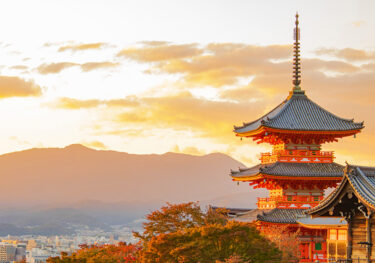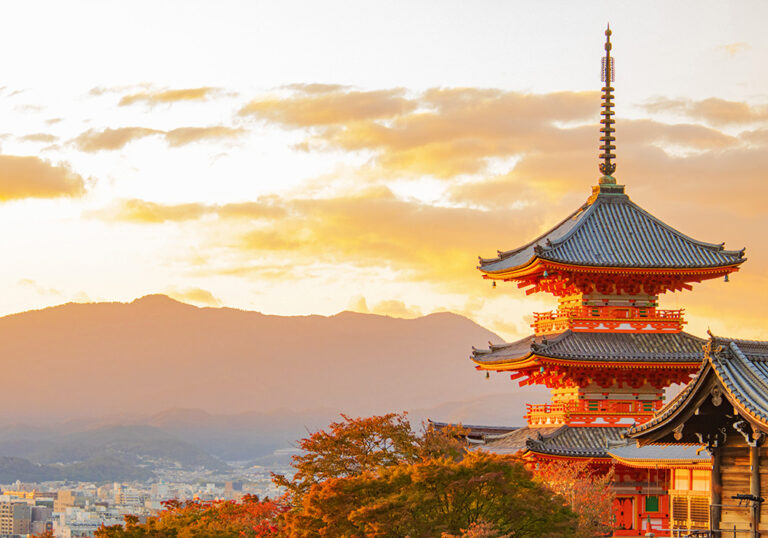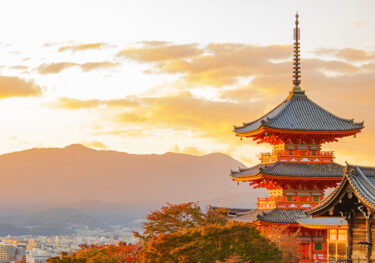Kiyomizu-dera Temple, located in Kyoto, is the most popular tourist spot in the city, attracting a large number of visitors. This renowned temple is famous for its “Kiyomizu Stage” and offers a captivating view of its highlights and historical significance.
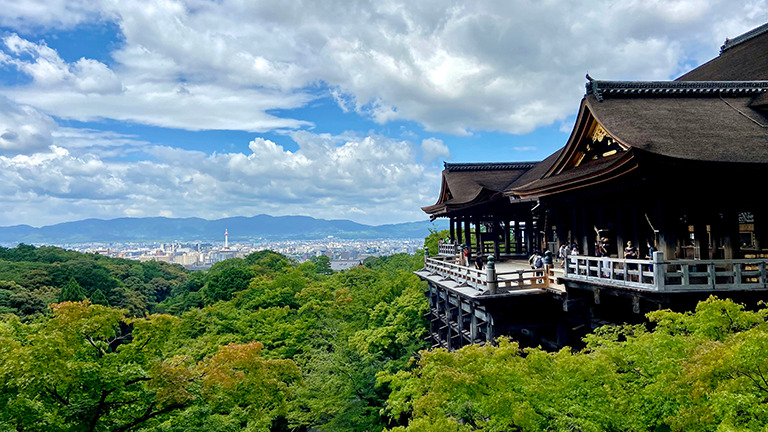
One of the UNESCO World Heritage sites is Kiyomizu-dera Temple
In Kyoto Prefecture and Shiga Prefecture, there are 17 temples and shrines collectively known as the “Cultural Assets of Ancient Kyoto.” These cultural assets of ancient Kyoto are registered as UNESCO World Heritage sites.
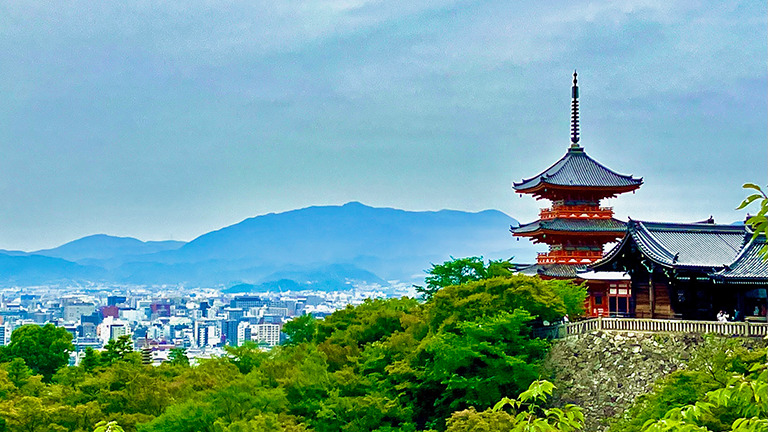
Kiyomizu-dera Temple is one of the cultural assets of ancient Kyoto and is famous for its “Kiyomizu Stage.” This renowned stage is located in the main hall of the temple and attracts a large number of visitors, creating a bustling atmosphere.
The history of Kiyomizu-dera Temple
Kiyomizu-dera Temple is a historic temple located in Higashiyama Ward, Kyoto City. Its establishment dates back to the year 778 during the Nara period. The temple has a deep connection with Sakanoue no Tamuramaro, a prominent figure in Japanese history.
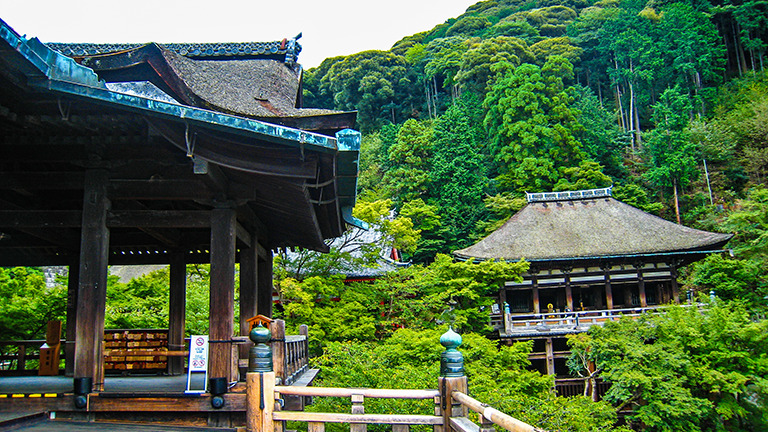
In the year 780, at Mount Otowa, Sakanoue no Tamuramaro was engaged in deer hunting when he was admonished against taking lives by a practicing monk named Kenshin. This teaching left a profound impact on Tamuramaro.
Inspired by this encounter, he decided to establish a temple dedicated to the Eleven-Faced Kannon Bodhisattva as its main deity.
Throughout its history, Kiyomizu-dera Temple has faced several instances of destruction by fire. However, during the Edo period in 1633, it was reconstructed under the patronage of Tokugawa Iemitsu, the third shogun of the Tokugawa dynasty.
What are the highlights of Kiyomizu-dera Temple?
There are various highlights at Kiyomizu-dera Temple. Some of the notable attractions include:
Niomon Gate
The “Niomon Gate” is the first gate that many tourists pass through when visiting Kiyomizu-dera Temple. It was originally constructed, but unfortunately destroyed during the Ōnin War. However, it was later rebuilt.
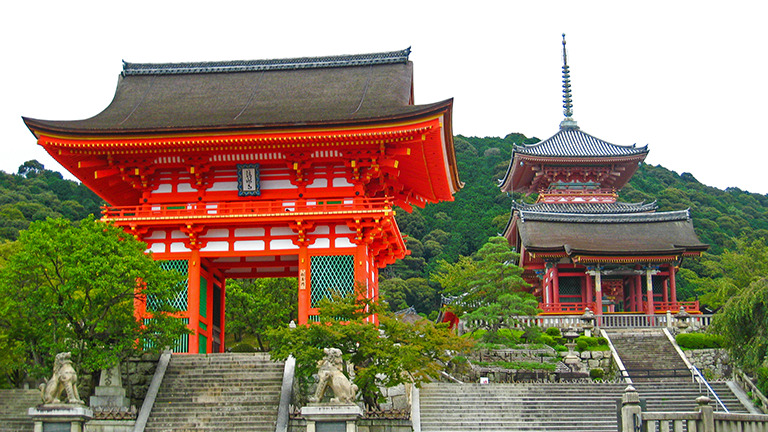
There is a two-story gate called “Roumon” which is painted in vermilion, and it is also known as the “Red Gate.”
The statues on the left and right sides of the Niomon gate are two Niou figures that symbolize the Kamakura culture.
Furthermore, in front of the gate, there are a pair of guardian lion-dogs called “阿阿,” facing each other with their mouths open.
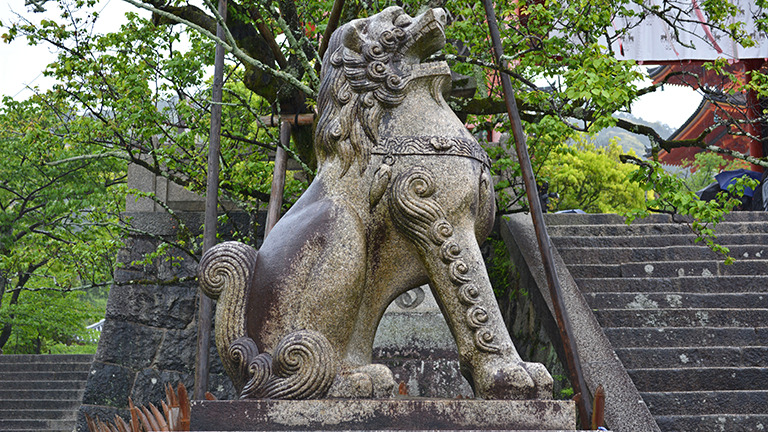
A three-story pagoda
The three-story pagoda of Kiyomizu-dera Temple is designated as an “Important Cultural Property.”
Impressively, it stands at a height of approximately 31 meters, making it one of the largest three-story pagodas in Japan.
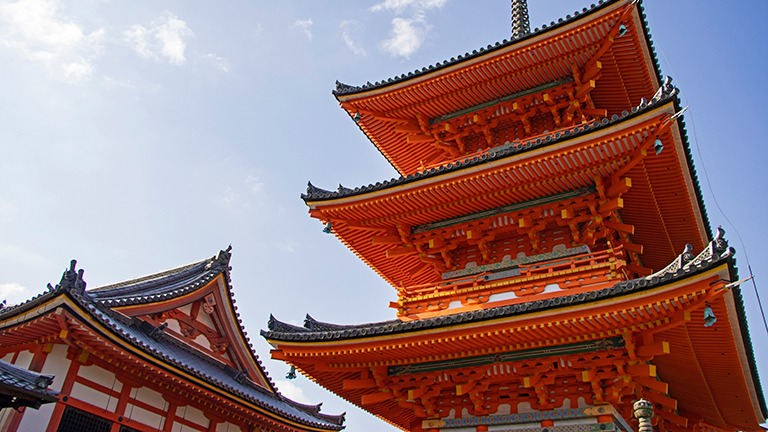
The three-story pagoda was originally constructed during the Heian period and later rebuilt during the Edo period.
Similar to the Niomon gate, the vermilion-painted three-story pagoda is truly magnificent.
It appears that inside the pagoda, there is an enshrined statue of the “Dainichi Nyorai” (Great Sun Buddha).
The Kiyomizu Stage
The Kiyomizu Stage, also known as the Hondo (main hall), was rebuilt during the Edo period through a donation from Tokugawa Iemitsu, and it is designated as a National Treasure.
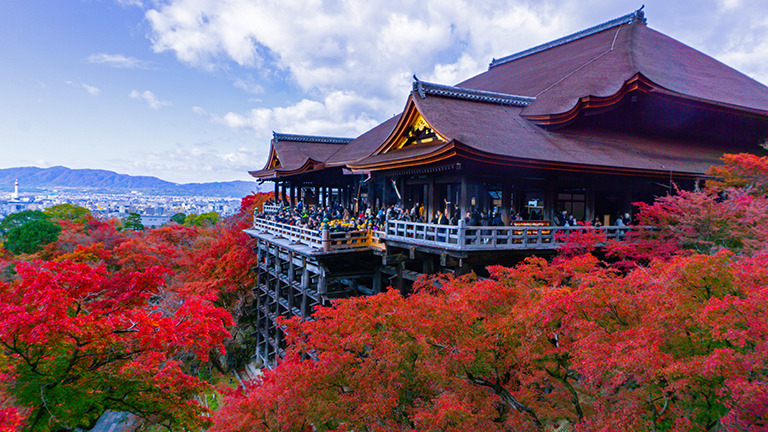
Are you familiar with the proverb “Jumping off the Kiyomizu Stage”?
It means “to make a bold decision” or “to take a leap of faith.”
The Kiyomizu Stage refers to a stage built on a mountainside, standing at a height of approximately 13 meters. Jumping off from such a height represents a significant decision metaphorically depicted.
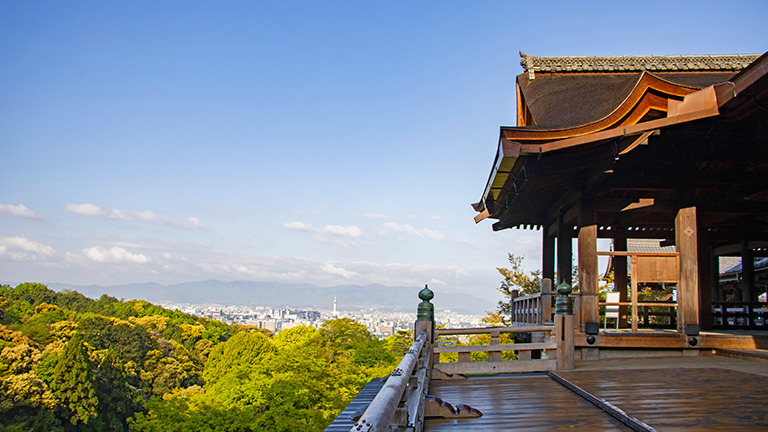
Furthermore, since the stage provides a panoramic view of Kyoto city, it attracts a large number of tourists, creating a lively atmosphere.
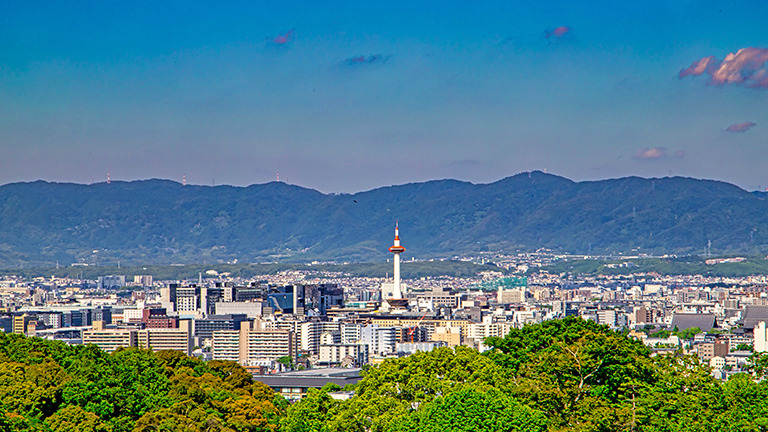
You can enjoy beautiful scenery throughout the four seasons, so why not consider visiting and experiencing it for yourself?
Otowa Falls
This is about “Otowa Falls” located within the grounds of Kiyomizu-dera Temple.
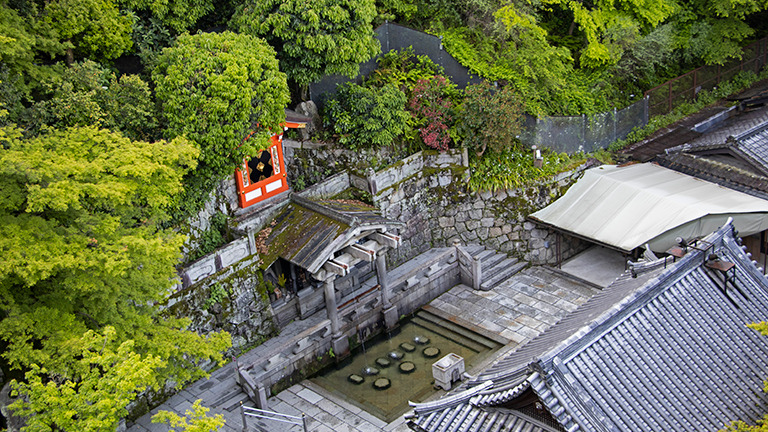
Otowa Falls consists of three small cascades, and each cascade is believed to offer different blessings.
From the front view, the left cascade is said to bring academic success, the middle cascade is associated with fulfilling relationships (marital harmony and matchmaking), and the right cascade is believed to grant longevity and a healthy life.
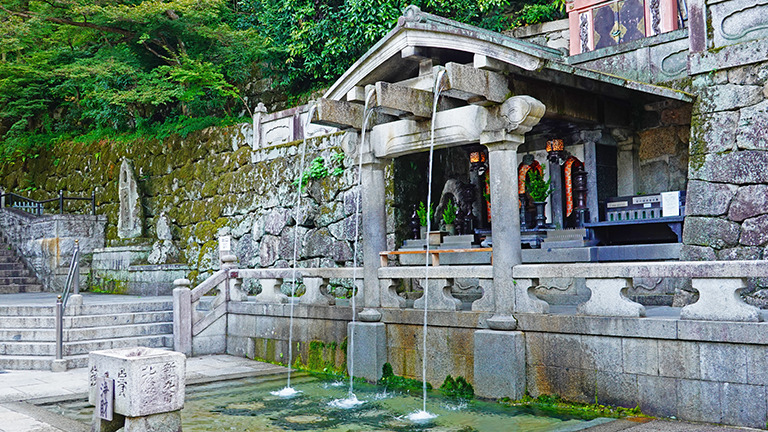
Near Otowa Falls, there is a teahouse, making it a perfect spot for taking a break and enjoying some refreshments.
The historic townscape in the vicinity
The area surrounding Kiyomizu-dera Temple is renowned for its historic streetscape that exudes the characteristic charm of Kyoto.
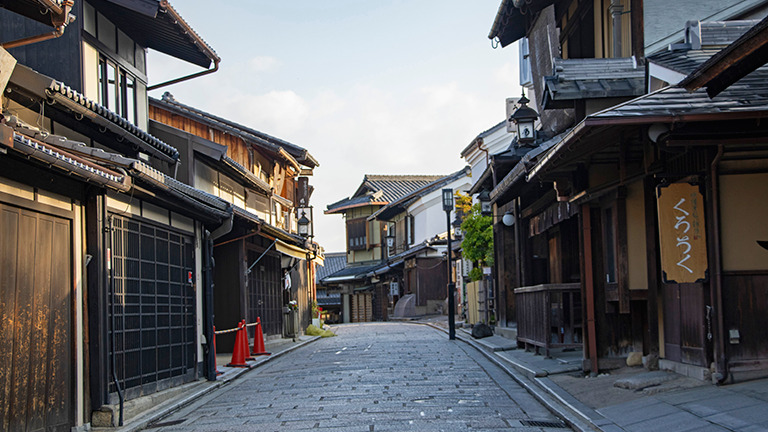
There are also various restaurants and souvenir shops in the area, making it a recommended spot for tourists.
The approach to Kiyomizu-dera Temple features slopes such as “Sannezaka” and “Ninenzaka,” which are perfect for strolling around, enjoying local delicacies, and exploring the area.
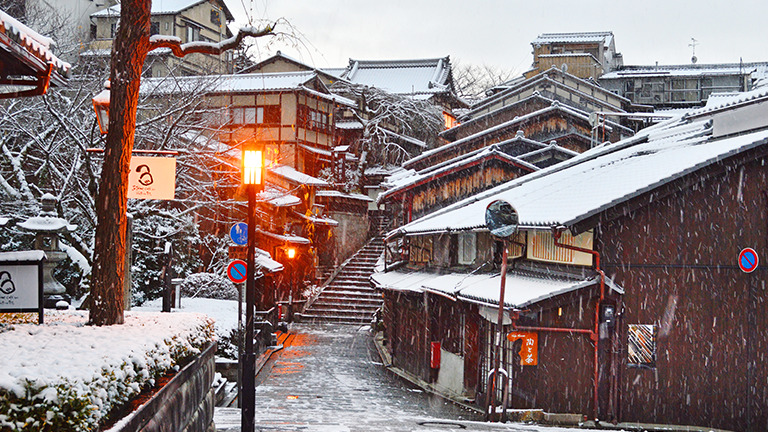
The photo below shows the Goju-no-to (Five-Story Pagoda) located in the vicinity of Kiyomizu-dera Temple.
The “Yasaka Pagoda” of Hokan-ji Temple is a famous five-story pagoda that truly embodies the essence of Kyoto.
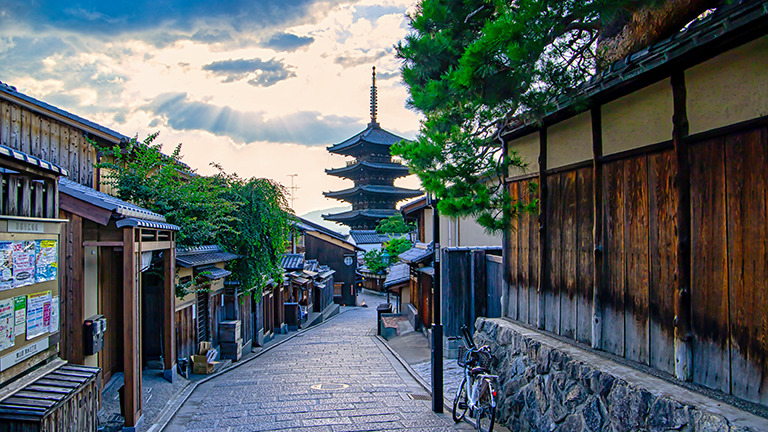
Access to Kiyomizu-dera Temple
Access to Kiyomizu-dera Temple is convenient from Keihan Electric Railway’s “Kiyomizu Gojo Station” and “Gion Shijo Station.”
Near Kiyomizu-dera Temple, there is the “Kyoto City Kiyomizu-zaka Tourist Parking Lot” available for parking.
Conclusion
In this article, we have introduced the history, highlights, and attractions of Kiyomizu-dera Temple.
As one of the prominent tourist destinations in Kyoto, Kiyomizu-dera Temple is definitely worth a visit. We encourage you to experience its charm firsthand.
- Next
記事がありません
